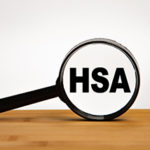By Hunter Graham, CPA, Tax Manager

The return of 100% bonus depreciation
Many taxpayers rejoiced over the passage of the One Big Beautiful Bill Act (OBBBA) and the return of now-permanent 100% bonus depreciation. However, there are some nuances that differentiate the rules from the original 100% bonus depreciation under the 2017 Tax Cuts and Jobs Act (TCJA). Bonus depreciation has been phasing out the past couple of tax years, dropping by 20% annually. In 2025, taxpayers were set to have bonus depreciation on assets purchased and in service for the year reduced to 40%. The OBBBA has set this number to jump back to 100% bonus depreciation for assets placed in service after January 20, 2025.
Unfortunately, anything in service before January 20 will still be subject to the 40% bonus depreciation limit. In addition to the January 20 in service date, there are some other key changes that distinguish 100% bonus depreciation under the OBBBA from the original TCJA. It’s not as simple as business as usual as we look forward to the 2025 tax filing season.
Qualified Production Property (QPP): Expanded eligibility for manufacturers
One of the first major changes is the application of bonus depreciation for Qualified Production Property (QPP). This will allow 100% bonus depreciation on certain nonresidential real property used in a qualified production activity. Previously, no nonresidential real property qualified for 100% bonus depreciation which was a major limit to manufacturers owning their own manufacturing facilities. To qualify, QPP must meet the following requirements:
- Located in the U.S.
- Used as an integral part of the business.
- To be defined as integral, the structure must directly support core operations such as manufacturing, processing or refining, not be adjacent or supportive of those functions. The function must be essential to production.
- Be constructed by the taxpayer starting after January 19, 2025, and placed in service before January 1, 2029, if the property is placed in service after July 4, 2025, and before January 1, 2031.
- Used for a qualified production activity.
- Under IRC section 168(n)(2)(D), a qualified production activity refers to the manufacturing, production, or refining of a qualified product if that activity results in substantial transformation of the materials comprising the product. One example of this would be converting wood pulp to paper.
- Election must be made to treat property as qualified improvement property (“QIP”)
This could become a major incentive for U.S. manufacturers to expand their plants domestically over the next five years.
Reevaluating self-constructed property
Another major change is how we look at self-constructed property. It was originally thought that self-constructed property that would be considered land improvements or QIP would qualify for the 100% bonus deduction in year one as it was under TCJA, but this might not be the case. The OBBBA states specifically that property must be bought and placed in service on or after January 20, 2025, and excludes self-construction before that date. This could come as a surprise to businesses that have been making improvements over the past couple of years that may have been expecting to qualify for 100% bonus. For anything self-constructed, taxpayers will have to take a closer look at when the underlying costs were incurred. For all costs that qualify as QIP and land improvements incurred before January 20, 2025, taxpayers will be limited to 40% bonus depreciation.
Increased Section 179 expensing thresholds
One last major change is the increase to the Section 179 expense thresholds. Under the TCJA, taxpayers could expense up to $1 million in tangible personal property or qualified improvement property. The million-dollar limitation was set to phase out starting at $2.54 million in purchases and was completely phased out at $3.13 million. Under the OBBBA, the phase out limitations are increased to $2.5 million and $4 million, indexed for inflation every year.
Navigating the nuances
While the return of 100% bonus depreciation is generally very taxpayer favorable, each individual taxpayer will need to be mindful of their specific situation and the nuances included within the OBBBA. Contact your Keiter Opportunity Advisor to help you understand how this legislation will directly impact your business.
About the Author
The information contained within this article is provided for informational purposes only and is current as of the date published. Online readers are advised not to act upon this information without seeking the service of a professional accountant, as this article is not a substitute for obtaining accounting, tax, or financial advice from a professional accountant.



